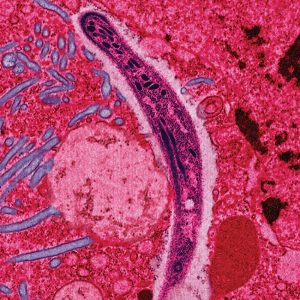4.3 Protists
Classification of Protists on the Phylogenetic Tree of Life
Protists are a diverse group of mostly single-celled organisms that don’t fit neatly into the other kingdoms of life. They are eukaryotes, meaning their cells have a nucleus and other membrane-bound organelles, but they are not animals, plants, or fungi. Because of their diversity, protists are often considered a “catch-all” category in biological classification.
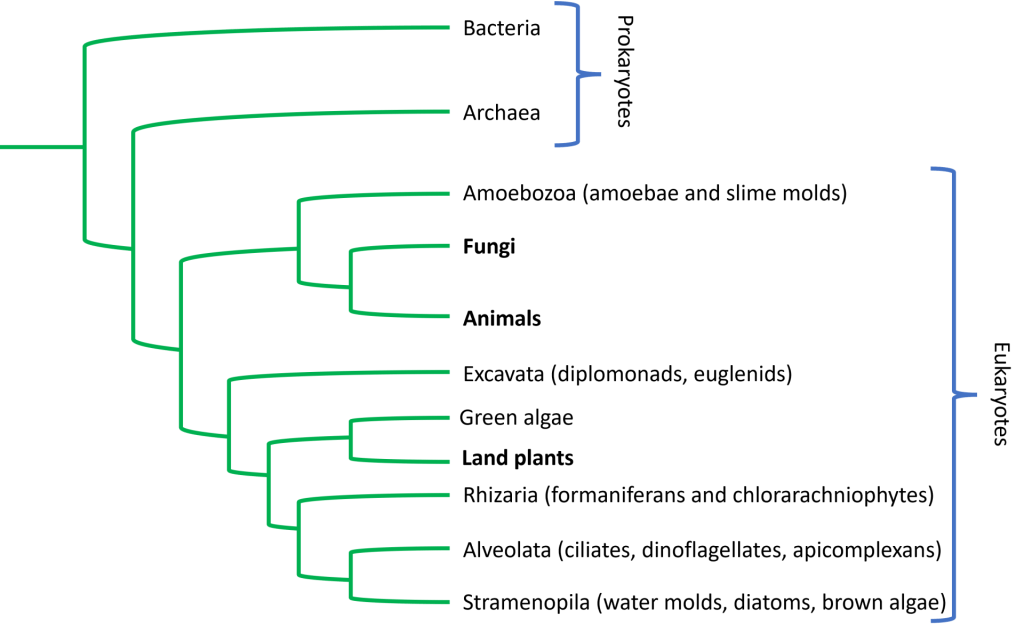
Figure 4.3.1 Image Description
The image is a phylogenetic tree showing the evolutionary relationships among major groups of life.
On the left, a single ancestral line branches into Prokaryotes and Eukaryotes. Prokaryotes include:
- Bacteria
- Archaea
Eukaryotes include a wide range of lineages:
- Amoebozoa (amoebae and slime molds)
- Fungi
- Animals
- Excavata (diplomonads, euglenids)
- Green algae
- Land plants
- Rhizaria (foraminiferans and chlorarachniophytes)
- Alveolata (ciliates, dinoflagellates, apicomplexans)
- Stramenopila (water molds, diatoms, brown algae)
The tree highlights the split between Prokaryotes (Bacteria and Archaea) and the more diverse Eukaryotes, which include single-celled organisms, fungi, animals, algae, and plants.
Characteristics of Protists
There are currently over 100,000 described living species of protists, though scientists believe many more remain undiscovered. Given this diversity, it is not surprising that few characteristics are common to all protists.
Habitat
Nearly all protists exist in some type of aquatic environment, including freshwater and marine environments, damp soil, and even snow. Several protist species are parasites that infect animals or plants. A parasite is an organism that lives on or in another organism and feeds on it, often without killing it. A few protist species live on dead organisms or their wastes, and contribute to their decay.
Structure
Protist cells are among the most complex of all eukaryotic cells. While most are microscopic and unicellular, some form colonies or even true multicellular structures. Others, like certain seaweeds, are massive single cells with multiple nuclei (sometimes reaching three meters in length!). Most protists are motile and have evolved various ways to move: some use flagella or cilia, while others extend pseudopodia to crawl. Some can even sense and move toward light.
Human Pathogens
Many protists are pathogenic parasites that must infect other organisms to survive and reproduce. These parasitic protists are responsible for several serious human diseases, including malaria, African sleeping sickness, and giardiasis (“Beaver Fever”, a waterborne gastroenteritis). In addition to affecting humans, some protist pathogens target plants, causing widespread crop damage.
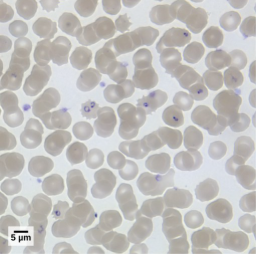
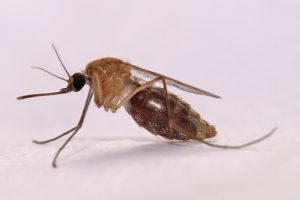
Malaria is a life-threatening disease caused by parasites of the genus Plasmodium. These parasites must infect both a mosquito and a vertebrate host to complete their life cycle. In humans, the parasite first develops in liver cells and then invades red blood cells, where it multiplies asexually. It eventually bursts out, destroying the blood cells and releasing waste products that trigger intense immune responses, including high fever and delirium. The most deadly species, Plasmodium falciparum, can destroy over half of a person’s circulating red blood cells, leading to severe anemia. It is transmitted to humans by the Anopheles gambiae mosquito, a highly aggressive vector (an organism that spreads disease from one host to another) found primarily in Africa. Controlling this mosquito through insecticides, bed nets, and environmental management is essential to malaria prevention. According to the World Health Organization, malaria causes hundreds of thousands of deaths each year, with the vast majority occurring in sub-Saharan Africa. Over the course of human history, malaria is estimated to have caused up to 5 billion deaths, making it one of the deadliest diseases ever known.
Protist Diversity
Protists are incredibly diverse, so scientists often group them into three major categories based on how they obtain energy:
Protozoa (Animal-like Protists)
Protozoans are animal-like protists that are unicellular, heterotrophic, and often motile, meaning they can move to find food.
They are typically grouped into four main sub-categories based on their movement and structure:
Amoebas
Amoebas move using pseudopodia (temporary extensions of their cell membrane).
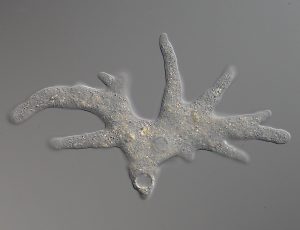
Flagellates
Flagellates use one or more flagella to swim. Some are free-living, while others are parasitic.
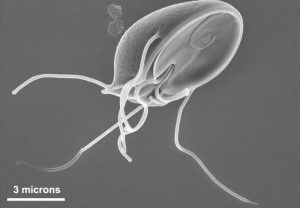
Ciliates
Ciliates are covered in cilia to help them move and feed.
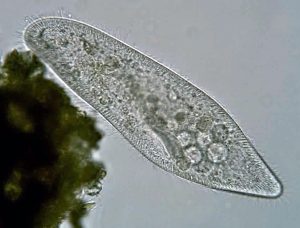
Fungus-like Protists
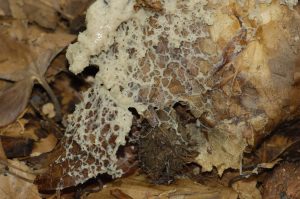
Fungus-like protists are heterotrophic organisms that absorb nutrients from decaying organic matter, similar to true fungi. They are often found in moist environments and play an important role as decomposers. This group includes slime moulds, which exhibit a unique life cycle. In their feeding stage, slime molds exist as unicellular, amoeba-like organisms that engulf food particles. However, under certain conditions, many of these cells can unite to form large, multicellular structures that move and reproduce collectively.
Algae (Plant-like Protists)
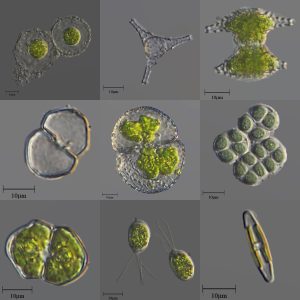
Algae are autotrophic protists that perform photosynthesis, much like plants. They are incredibly diverse and can be unicellular, colonial, or multicellular. Unicellular algae are found in various aquatic environments and play a crucial role as primary producers, commonly referred to as phytoplankton.
Multicellular algae, also known as seaweeds, are typically classified into sub-groups based on their pigments:
- Green algae are closely related to land plants.
- Brown algae include large seaweeds such as kelp.
- Red algae are often found in deeper ocean waters due to their ability to absorb blue light.
Green algae
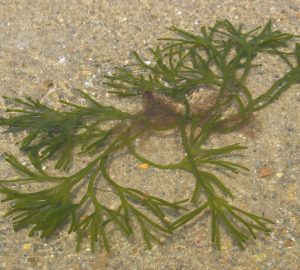
Brown algae
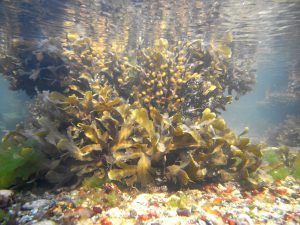
Red algae
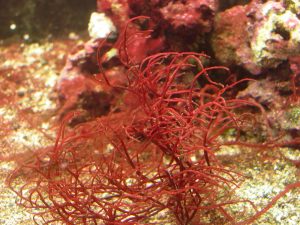
Knowledge Check
Text Description
- They all cause disease in humans
- They are eukaryotes that don’t belong to animals, plants, or fungi
- They are the most ancient life forms on Earth
- They are all multicellular and autotrophic
- Flagellates – flagella
- Amoebas – cilia
- Ciliates – flagella
- Apicomplexans – pseudopodia
- Giardiasis
- Malaria
- Lyme disease
- African sleeping sickness
- Flagellates
- Algae
- Apicomplexans
- Slime molds
- Predators of bacteria
- Decomposers of organic waste
- Primary producers through photosynthesis
- Parasites of plants
6. Categories: Animal-Like Protists, Fungus-Like Protists, Plant-Like Protists
Draggable Terms: Protozoa, Slime molds, Algae, Phytoplankton, Amoebas, Decomposers, Seaweeds, Flagellates, Ciliates, Photosynthetic, Apicomplexans, Unicelluar/heterotrophic/motile
Answers:
- b. They are eukaryotes that don’t belong to animals, plants, or fungi
- a. Flagellates – flagella
- b. Malaria
- d. Slime molds
- c. Primary producers through photosynthesis
- Animal-Like Protists: Protozoa, Amoebas, Flagellates, Ciliates, Apicomplexans, Unicellular/heterotrophic/motile. Fungus-Like Protists: Slime molds, Decomposers. Plant-Like Protists: Algae, Phytoplankton, Seaweeds, Photosynthetic.
OpenAI. (2025). ChatGPT. [Large language model]. https://chat.openai.com/chat
Prompt: Create 5 multiple-choice questions using the following content
“13.3 Protists” from Biology and the Citizen by Colleen Jones is licensed under a Creative Commons Attribution 4.0 International License, except where otherwise noted. Modifications: Edited and reworded

